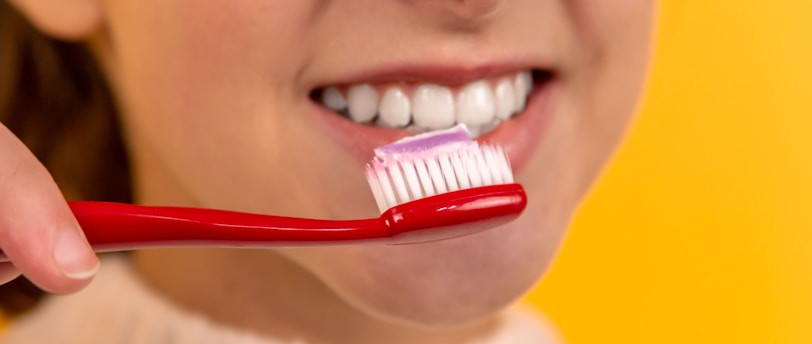SMILE- It costs nothing !!!
Proper Brushing Technique for Optimal Oral Health
Discover the proper brushing technique for your teeth with our step-by-step guide. Ensure effective dental care and achieve a brighter smile by following our expert tips for maintaining excellent oral health.
10/24/2024
How to Brush Your Teeth the Right Way
Brushing your teeth is something we all do every day, but are we doing it the right way? The right technique can make a huge difference in maintaining healthy teeth and gums.
In this guide, we’ll walk you through the steps to make sure you’re brushing your teeth properly, avoiding common mistakes, and ensuring your oral hygiene is top-notch.
Why Proper Brushing Matters
Proper brushing is crucial for:
Preventing cavities: By removing plaque, you avoid the buildup of harmful bacteria that causes tooth decay.
Fighting gum disease: Plaque that isn’t removed can lead to gum inflammation and eventually periodontitis.
Avoiding bad breath: Regular brushing removes food particles and bacteria responsible for unpleasant odors.
Whiter teeth: Brushing helps remove surface stains, making your smile brighter.
Related : Does whitening toothpaste really work ?
Step-by-Step Guide to Brushing Your Teeth Correctly
Step 1: Choose the Right Toothbrush
Your toothbrush is your main tool for keeping your teeth clean. Here’s how to choose the right one:
Soft bristles: Use a toothbrush with soft bristles to avoid damaging your enamel and gums.
Size: Choose a brush that comfortably fits your mouth. A smaller brush head may be more effective in reaching tight spaces.
Electric vs. Manual: Electric toothbrushes can be more effective at removing plaque, but manual toothbrushes can do the job if used properly.
Step 2: Use the Right Amount of Toothpaste
Adults: A pea-sized amount of fluoride toothpaste is sufficient.
Children under 3: Use a smear of toothpaste, about the size of a grain of rice, to minimize swallowing fluoride.
Step 3: Position the Brush at a 45-Degree Angle
Place the toothbrush at a 45-degree angle to your gums. This helps the bristles reach under the gumline, where plaque tends to accumulate.
Step 4: Use Gentle, Circular Motions
Use small circular motions to clean the surface of each tooth. Avoid scrubbing back and forth, as this can wear down your enamel and irritate your gums. Circular movements help lift plaque without causing damage.
Step 5: Brush All Surfaces
Make sure to brush each surface of your teeth:
Outer surfaces: Work systematically, brushing each tooth’s front surface.
Inner surfaces: Pay special attention to the inner surfaces, especially the lower front teeth where plaque tends to accumulate.
Chewing surfaces: Brush the chewing surfaces of your molars with short strokes, as food particles often get trapped there.
Step 6: Don’t Forget Your Gums
Brushing isn’t just about your teeth. Gently brush your gums to prevent gum disease. Remember to be gentle, as too much pressure can damage the gum tissue.
Related : How to remove plaque
Step 7: Brush Your Tongue
Bacteria can accumulate on your tongue, contributing to bad breath. Use your toothbrush or a tongue scraper to gently clean your tongue, starting from the back and moving forward.
Step 8: Brush for Two Full Minutes
Many people brush for less than the recommended time. Set a timer or use a toothbrush with a built-in timer to ensure you're brushing for two full minutes.
Divide your mouth into four sections (upper right, upper left, lower right, lower left), and spend 30 seconds on each.
Step 9: Rinse Your Mouth and Brush
After brushing, rinse your mouth with water or a fluoride mouthwash for extra protection. Avoid rinsing immediately with water if you’re using a fluoride toothpaste, as it can wash away the protective fluoride layer left on your teeth.
Common Brushing Mistakes to Avoid
Brushing too hard: Excessive pressure can wear down enamel and irritate gums.
Using the wrong toothbrush: A hard-bristled brush can cause damage; opt for soft bristles.
Brushing too quickly: Rushing through brushing means you’ll miss important areas. Always brush for the full two minutes.
Neglecting your tongue: Failing to clean your tongue allows bacteria to build up, leading to bad breath.
How Often Should You Brush Your Teeth?
Dentists recommend brushing your teeth at least twice a day:
Once in the morning to remove plaque buildup from overnight.
Once before bed to clean off food particles and prevent bacteria growth while you sleep.
However, brushing after meals, especially those high in sugar or acid, can provide extra protection against tooth decay.
Related: How often should you replace your toothbrush ?
Flossing: The Perfect Companion to Brushing
Brushing alone doesn’t remove all plaque, especially from between your teeth.
Flossing once a day is crucial to clean between teeth where your toothbrush can’t reach. It prevents gum disease and helps maintain overall oral health.
Brushing your teeth the right way is simple but essential for maintaining healthy teeth and gums.
By choosing the right tools, using proper technique, and avoiding common mistakes, you’ll improve your oral health and keep your smile bright.
So, take the time to brush mindfully, and your teeth will thank you for it!

Contact Smiles
drdeepi15@gmail.com
Dr. Deepika B.D.S
© 2025 SmileWide Dental. All Rights Reserved.
Have doubts ..?


